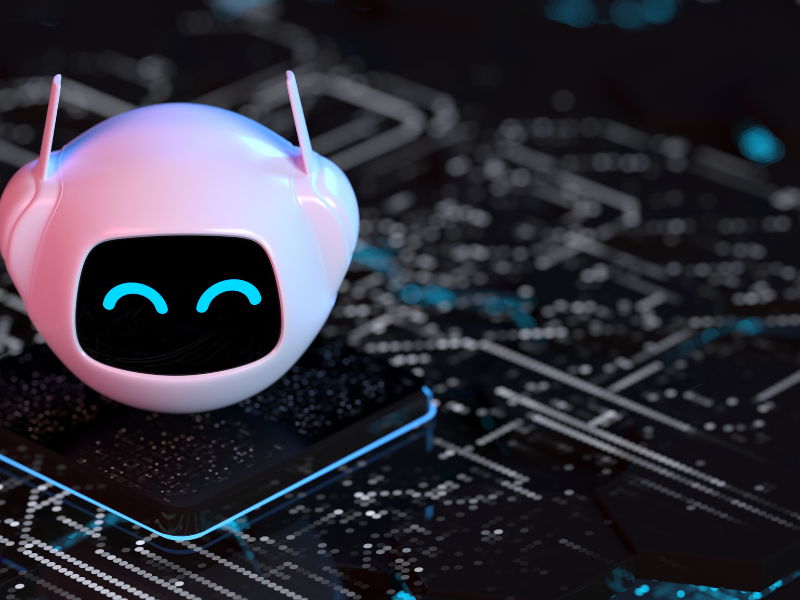Written by Adithya Bodi, Demand Generation Manager
Generative Artificial Intelligence (AI) has emerged as a transformative force in the field of media and entertainment, reshaping traditional paradigms and ushering in a new era of creativity and efficiency. The ability to simulate and replicate human-like thinking processes has unlocked a myriad of applications across various content creation domains. The subsequent sections delve into seven compelling gen AI use cases in the media and entertainment industry.
Contents
Content Generation
Generative AI offers a seamless blend of innovation and efficiency for content development. Scriptwriters, filmmakers, and game developers are harnessing the power of AI algorithms to generate scripts, dialogues, and entire narratives. By analyzing existing media patterns, Generative AI streamlines the creative process, providing a valuable tool that not only enhances productivity but also introduces novel perspectives and ideas to the storytelling landscape.
This novel approach to content generation exemplifies the symbiosis between human creativity and machine intelligence, fundamentally reshaping the landscape of narrative construction. It empowers content creators to harness the optimal blend of human creativity and the efficiency of machine execution, offering unparalleled possibilities for creative expression.
Language Translation in Multimedia
Generative AI’s language processing capabilities can facilitate real-time language translation and break down language barriers in global media, making content accessible to a broader audience. By dynamically translating spoken or written words in videos, podcasts, and other multimedia formats, Generative AI can foster inclusivity and expand the reach of media content. Its adaptability to various languages ensures that multimedia content can seamlessly traverse linguistic boundaries, contributing to a more interconnected and globally accessible media landscape.
Virtual Reality
Generative AI is directly applicable to virtual reality (VR), enabling the creation of immersive and interactive environments. Through sophisticated algorithms, genAI can help tailor virtual landscapes for gaming and simulations, adapting in real-time to user interactions. This level of dynamic responsiveness heightens the user experience and can be used to blur the boundaries between the physical and virtual worlds.
The potential for Generative AI in VR extends far beyond mere visual appeal; it introduces a paradigm where user engagement is not just a passive experience but an active, responsive collaboration with the AI-generated environment.
News Generation
Generative AI’s influence extends to the fast-paced world of journalism where it can autonomously generate news articles and summaries. By sifting through vast amounts of raw data and events, AI accelerates the news production process, ensuring timely dissemination of information.
However, ethical considerations such as bias and accuracy must be rigorously addressed to uphold the credibility of AI-generated news content. This use case illustrates the potential for AI to revolutionize how news is consumed, with implications for real-time reporting and a more responsive media landscape.
Advertising Creativity
Generative AI can introduce a paradigm shift in advertising by assisting in the generation of customer-focused creative content. Marketers can leverage AI’s capacity to analyze market trends, consumer preferences, and cultural nuances to craft compelling visuals, slogans, and marketing copy.
This not only streamlines the ideation process but also enhances campaign innovation, enabling brands to stay at the forefront of dynamic consumer landscapes. The fusion of data-driven insights and creative prowess positions Generative AI as a powerful tool for advertisers striving to create impactful and resonant campaigns.
Lip Sync Translation
Generative AI can facilitate lip sync translation, transforming how audiovisual content is synchronized across different languages. Using advanced algorithms, the technology can carefully analyze linguistic subtleties and facial movements, ensuring a precise match between spoken words and on-screen lip actions. This capability will not only enrich the viewer experience but will also facilitate the seamless adaptation of content for diverse global audiences.
Synthetic Actors
A synthetic actor is an AI-generated character employed to portray a real person within digital environments, often used interchangeably with the term “virtual actor.” These digital entities find applications in diverse fields such as video games, movies, entertainment, and education, where they serve roles in simulations, virtual reality experiences, or as human-like instructional presenters in educational videos. The increasing use of synthetic actors is streamlining the character design process and providing unprecedented flexibility to content creators.
Conclusion: The Future of Generative AI in Media
The evolving nature of generative AI suggests that we are merely witnessing the tip of the iceberg. As Generative AI continues to mature, the full spectrum of its applications will become more apparent. For the media and entertainment industry in particular, it is perfectly reasonable to anticipate an ever-expanding array of use cases that redefine how media content is produced and consumed.
About TrackIt
TrackIt is an international AWS cloud consulting, systems integration, and software development firm headquartered in Marina del Rey, CA.
We have built our reputation on helping media companies architect and implement cost-effective, reliable, and scalable Media & Entertainment workflows in the cloud. These include streaming and on-demand video solutions, media asset management, and archiving, incorporating the latest AI technology to build bespoke media solutions tailored to customer requirements.
Cloud-native software development is at the foundation of what we do. We specialize in Application Modernization, Containerization, Infrastructure as Code and event-driven serverless architectures by leveraging the latest AWS services. Along with our Managed Services offerings which provide 24/7 cloud infrastructure maintenance and support, we are able to provide complete solutions for the media industry.
Additional Resources
An Introduction to Generative AI on AWS
AWS Resources for Generative AI
Amazon Q – Generative AI-Powered Assistant
5 Generative AI Use Cases for E-Commerce
About Adithya Bodi

Having spent over 6 years as a consultant working with companies spanning a broad variety of tech niches, Adithya has gained deep expertise in planning and executing content marketing and lead generation strategies. Adithya has been working with TrackIt since 2018 and has taken on a full-time position to assist the company in its growth while deepening his knowledge and expertise in AWS.
Adithya has a bachelor’s degree in Applied Physics and is an AWS Certified Solutions Architect Associate. He is also an avid calisthenics practitioner, a stock market enthusiast, and a recreational painter.

